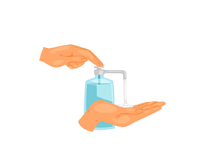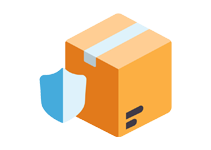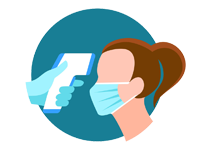Lasmiditan
Lasmiditan is a medication used for the acute treatment of migraine attacks. It belongs to a class of drugs called serotonin (5-HT) receptor agonists, which work by targeting specific serotonin receptors in the brain. This action helps to reduce the symptoms of migraine, such as pain, nausea, and sensitivity to light and sound. Lasmiditan is typically used when a migraine attack occurs and is not intended for preventive treatment. It is effective in relieving moderate to severe migraine symptoms in adults.
Uses of Lasmiditan
- Used for the acute treatment of migraine attacks with or without aura in adults
- Helps alleviate migraine symptoms such as pain, nausea, and sensitivity to light and sound
- Provides relief from moderate to severe migraines
- Not intended for migraine prevention, only for use during an attack
How Lasmiditan Works
Lasmiditan works by binding to serotonin receptors in the brain, specifically the 5-HT1F receptor. This binding helps to reduce the release of certain neurotransmitters, which can contribute to migraine pain and other symptoms. By blocking these signals, Lasmiditan helps alleviate migraine pain, reduce inflammation, and decrease the overall severity of the migraine attack.
Benefits of Lasmiditan
- Effective in relieving acute migraine symptoms, including pain, nausea, and sensitivity to light and sound
- Helps to reduce the frequency and severity of migraine attacks when used at the onset of symptoms
- Non-ergot-based medication, providing an alternative for those who cannot take traditional migraine medications
- Offers relief in patients who do not respond well to other migraine treatments
How to Take Lasmiditan
Lasmiditan is usually taken orally in the form of a tablet as soon as a migraine attack begins. The standard recommended dosage is one 50 mg tablet, but your healthcare provider may adjust this based on your individual needs. Do not exceed the prescribed dose, and do not take more than one dose in a 24-hour period. If symptoms persist or worsen, consult your doctor for further guidance.
Type of Dosage Available
- Tablets (50 mg and 100 mg)
Side Effects of Lasmiditan
- Drowsiness or dizziness
- Fatigue and weakness
- Dry mouth or an unusual taste in the mouth
- Nausea
- Rarely, severe allergic reactions may occur (seek immediate medical attention if you experience symptoms such as rash, itching, or swelling)
Safety Advice
- Do not drive or operate heavy machinery after taking Lasmiditan, as it may cause drowsiness or dizziness
- Inform your doctor if you have a history of heart disease, high blood pressure, or stroke
- Avoid alcohol while taking Lasmiditan, as it may increase the risk of side effects
- Consult your healthcare provider if you are pregnant or breastfeeding before taking this medication
- Do not take Lasmiditan if you are taking other migraine medications, such as triptans or ergot derivatives, without consulting your doctor
Frequently Asked Questions (FAQs)
Q. What is Lasmiditan used for?
A. Lasmiditan is used for the acute treatment of migraine attacks with or without aura in adults. It helps to relieve migraine symptoms such as pain, nausea, and sensitivity to light and sound.
Q. How does Lasmiditan work?
A. Lasmiditan works by targeting serotonin receptors in the brain, helping to reduce the release of neurotransmitters involved in migraine pain, thereby alleviating the symptoms of a migraine.
Q. What are the side effects of Lasmiditan?
A. Common side effects may include drowsiness, dizziness, fatigue, dry mouth, and nausea. In rare cases, severe allergic reactions may occur.
Q. How should I take Lasmiditan?
A. Take Lasmiditan as soon as a migraine attack begins, with the usual dosage being a 50 mg tablet. Do not exceed one dose in a 24-hour period.
Q. Can I take Lasmiditan with other migraine medications?
A. Consult your healthcare provider before combining Lasmiditan with other migraine medications, such as triptans or ergot derivatives, to avoid potential interactions.
Download India's most affordable pharmacy app
- Compare with medicine prices
- Save upto 90% on your medicine bills

Temperature Controlled storage and delivery

Regular Sanitization

Disinfected Packaging











 Added!
Added!